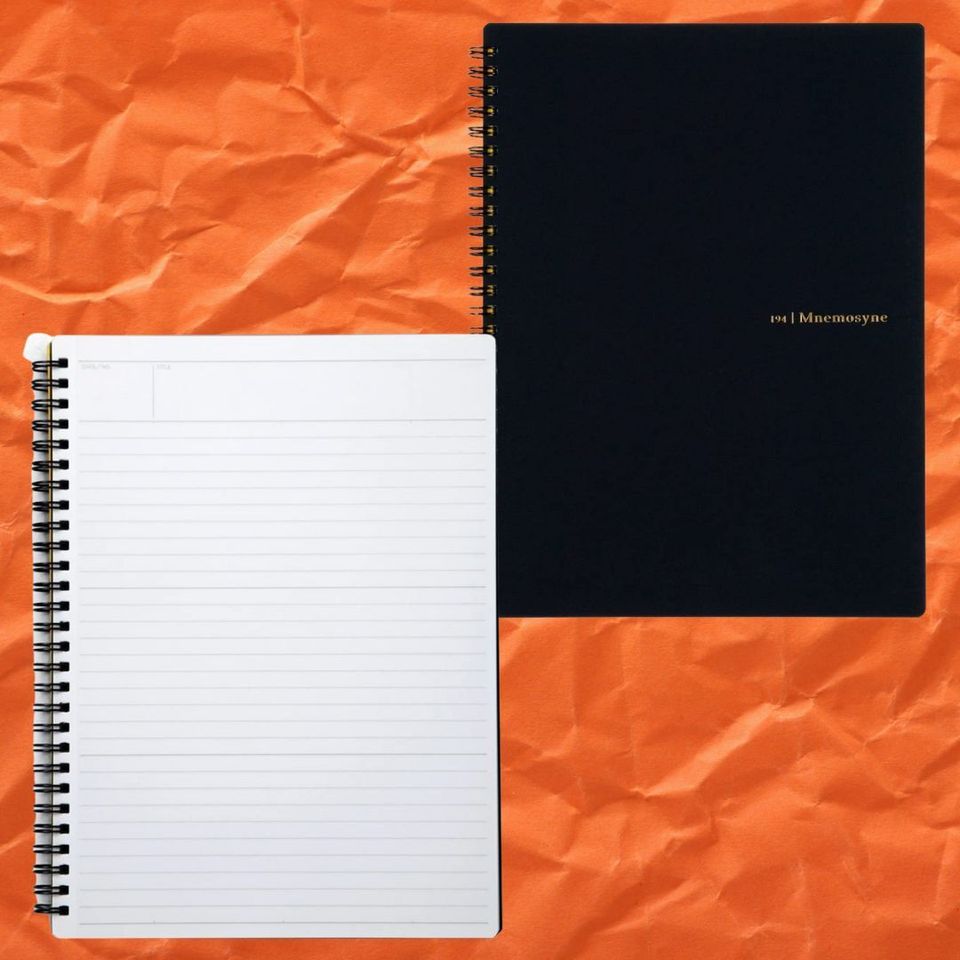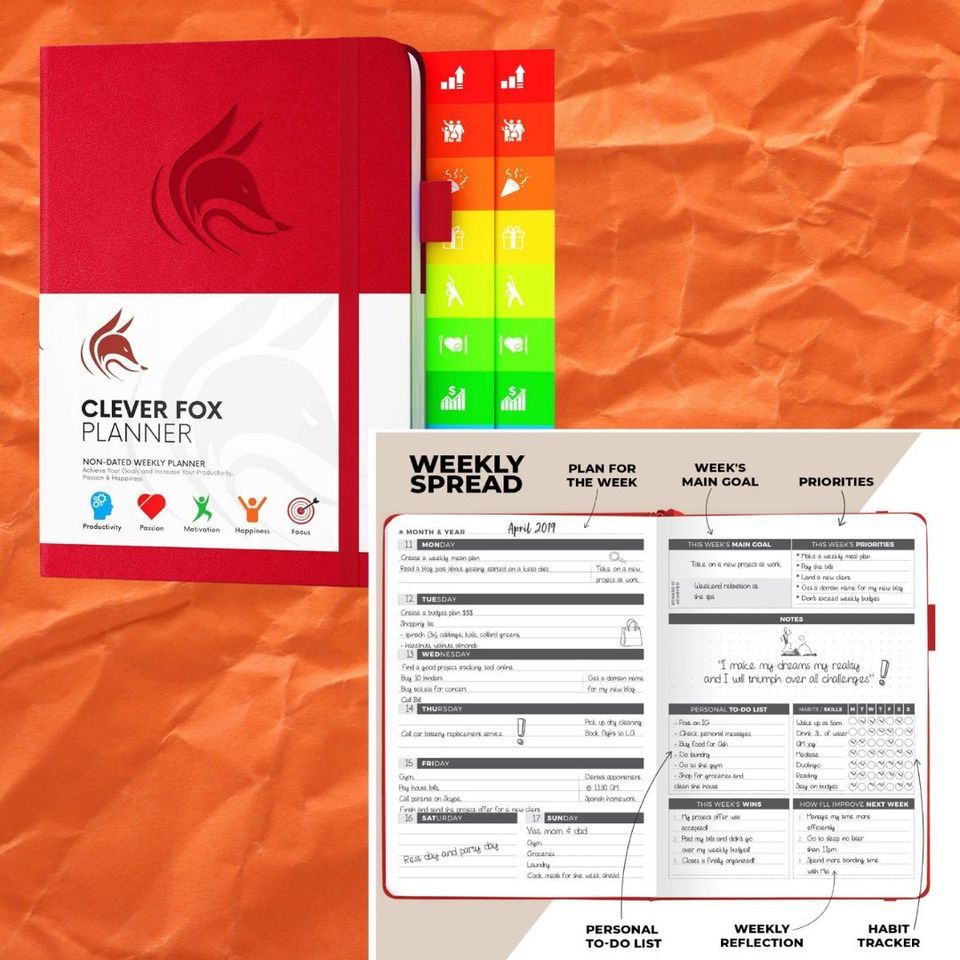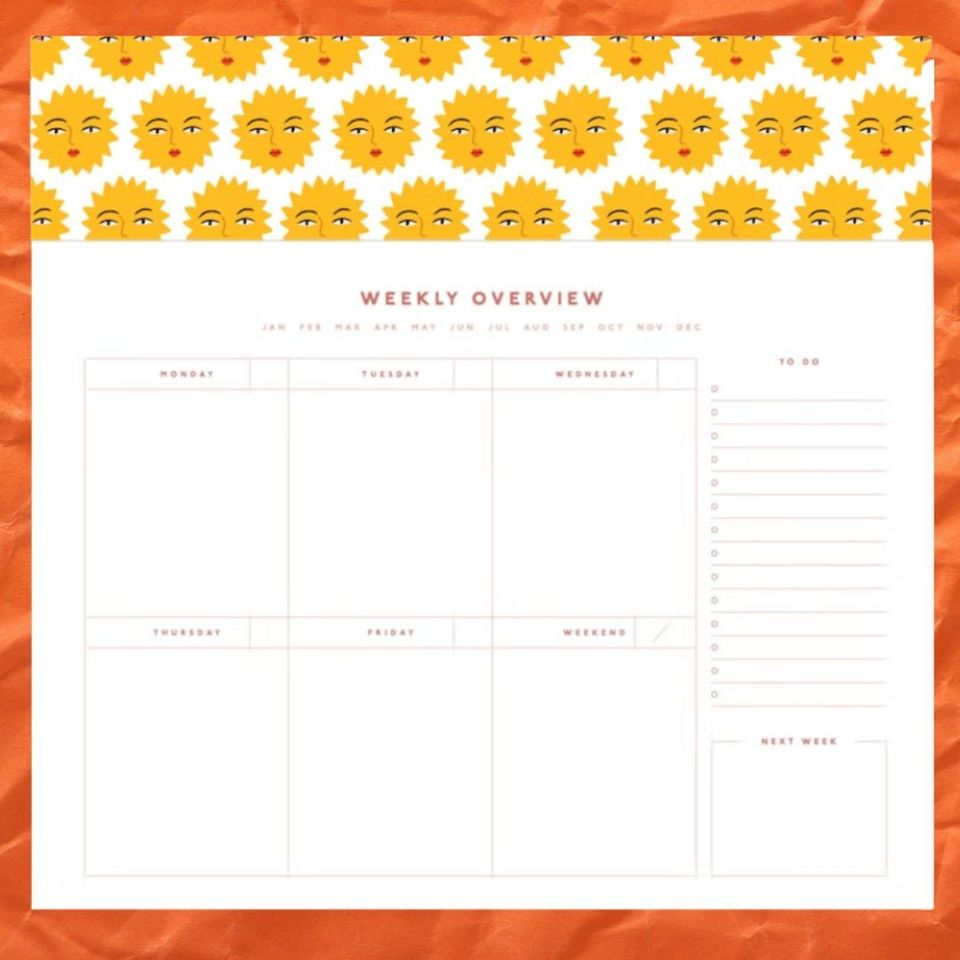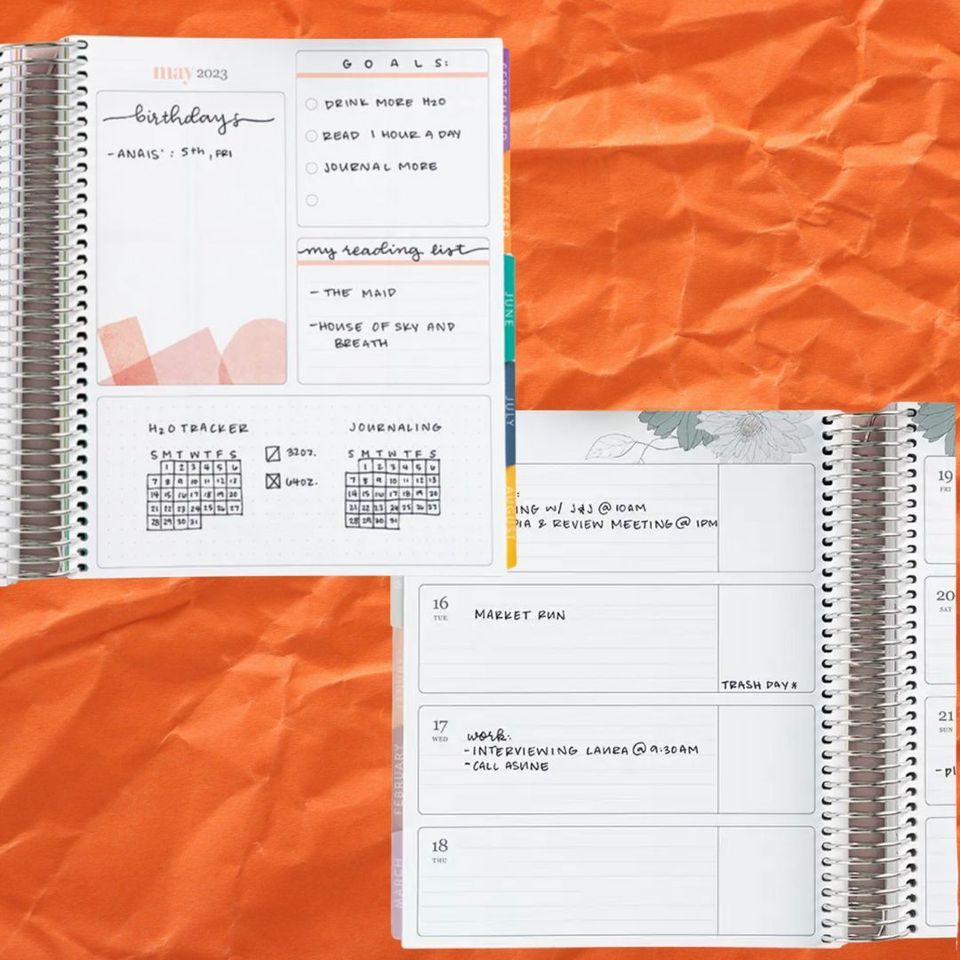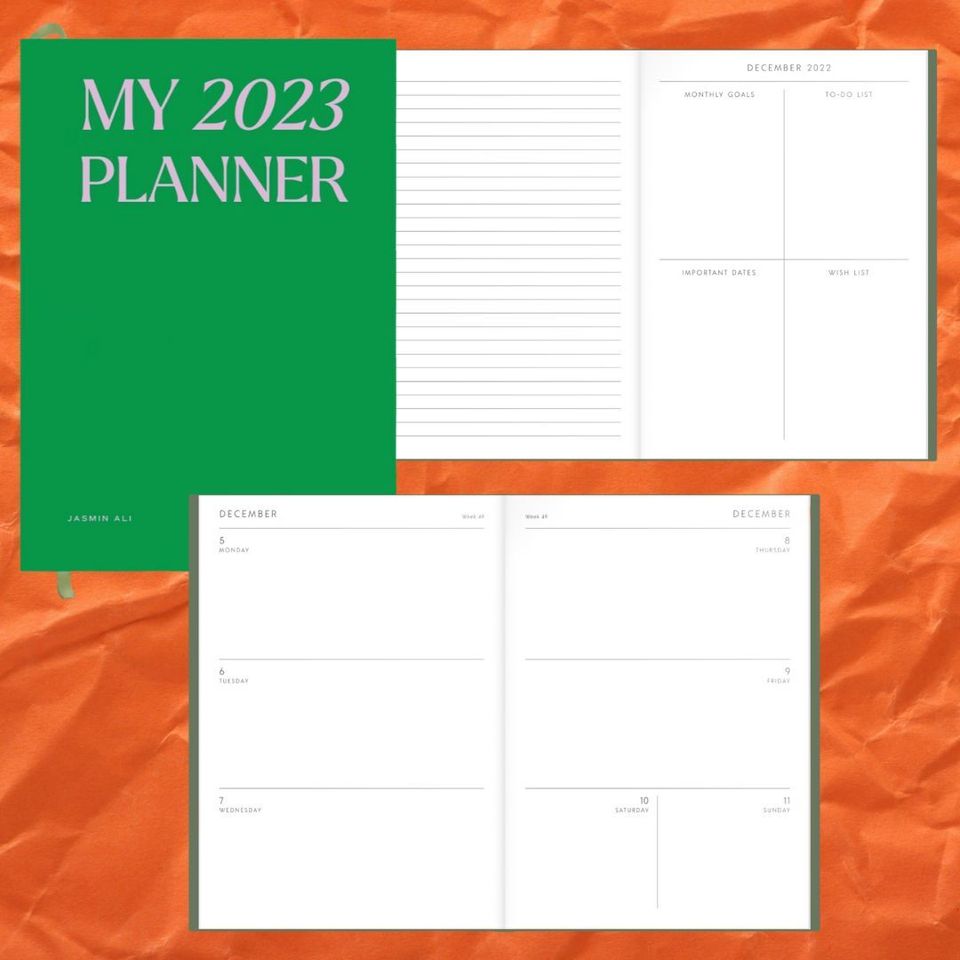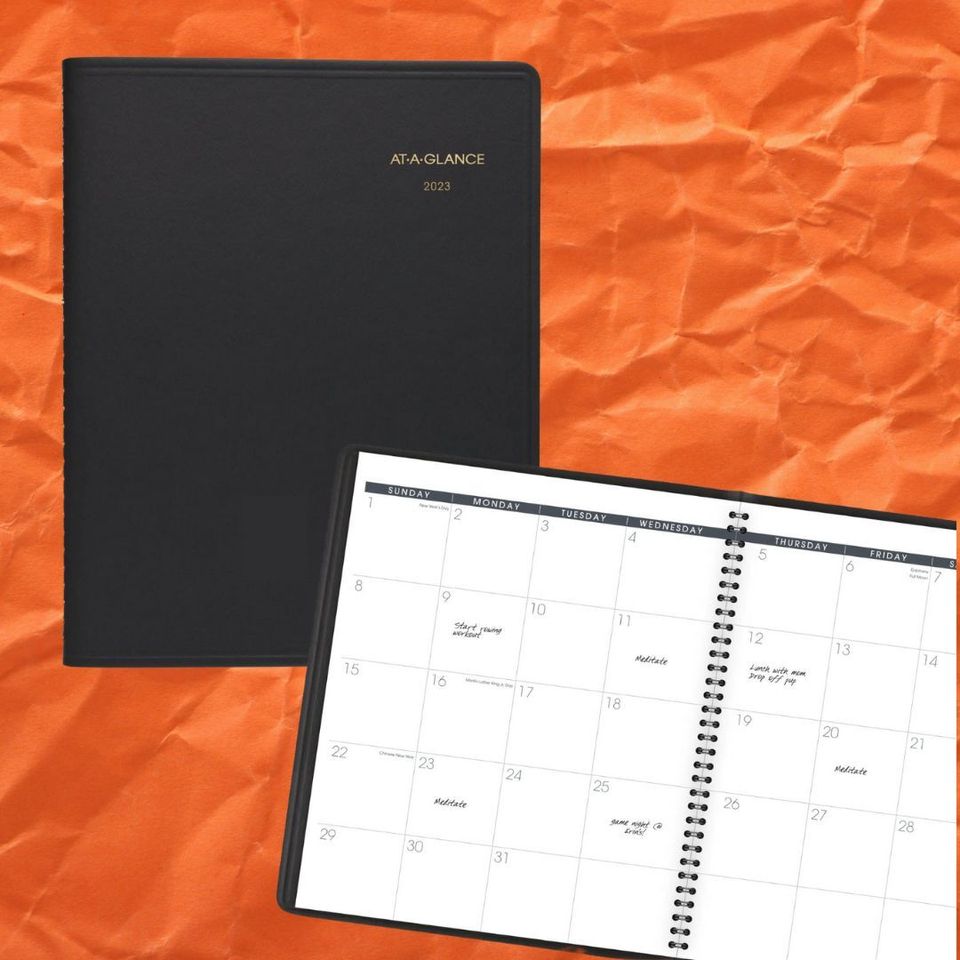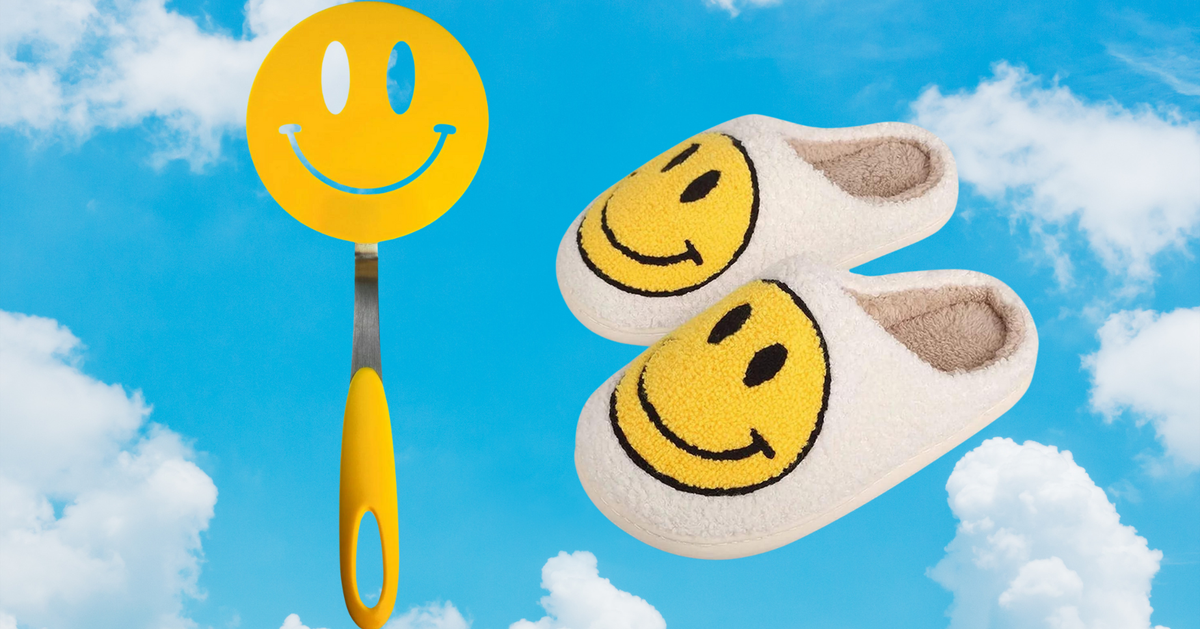Recently, I pulled a 1985 datebook from a bookcase to fact-check a date for an essay I was writing. Fascinated by what it held, I grabbed the rest of the books I have from the ’80s, ’90s and ’00s. Looking at 25-plus years scattered across my desk, I wondered: How had I accumulated so many datebooks?
Saving datebooks isn’t a practice I’ve pursued; it evolved from drinking coffee with my pocket planner every morning. Scanning lists, ticking off completed tasks, adding appointments and reminders — all of it grounds me and gives me the feeling I have a modicum of control over my life. So, come every new year, I can’t just ditch the 12-month relationship I’ve established with my little Moleskine from the previous year.
I’ve always saved my journals — but datebooks (also known as calendars) capture something else.
Cracking open a calendar from the past is like rummaging through the junk drawer in your childhood kitchen. You’ll find knickknack notations, gobs of cyclical tasks, grocery lists, birthdays to remember, library books to renew, coffee dates with people you can and can’t recall and cryptic notes.
Surveying the detritus of my daily doings from 1989, I was befuddled by notes devoid of context. “Order 40-pound pig.” Why? “Get more boxes. Pack books, chairs, dishes.” Which move was that? On Feb. 15, 1993, I scribbled “Buy Amtrak ticket.” Two weeks later the reminder resurfaced. Where was I going? Flipping ahead to April, it ends up I’d planned what I thought might be my last solo trip (to Washington, D.C.) before I delivered my first child four months later.
With planners as dated as mine, I come across obsolete errands and practices — videos to return to Blockbuster, typewriter ribbons to replace and stamps to buy for mailing self-addressed stamped envelopes with manuscripts. It’s hard to believe, but I even wrote my Social Security number on 1983’s personal information page.
I’ve encountered cringeworthy relics, too. Leafing through calendars from my 20s, I winced at daily calorie consumption totals, weekly assessments of how my Levi’s fit (“tight”/“medium”/“loose”) and predictions of when a letter would/should arrive from a man who never wrote me back. Still, I unearthed enough nuggets to neutralize those embarrassing bits. Take, for instance, a yellow sticky note that fell from 2007: “Can’t wait for your visit!” in my mom’s happy handwriting. Inside July 30, 2006, my then 10-year-old daughter used a hot pink marker to scrawl “My brithday” in her dyslexic print.
Quotes and random journal-ish jottings cropped up, too. What prompted me, as a high school junior, to copy this line from poet Dylan Thomas across 1978’s address page: “I said some words to the close and holy darkness, and then I slept.” In another datebook from 1985, desperation claimed the first week of May: “The uncertainty is too much. I’ve taken enough risks to last a lifetime.” That year I was recovering from a failed attempt to serve in the Peace Corps, a throughline manifested in a slew of affirmations, inspirational quotes and therapy appointments.
Most years contained throughlines — some more dramatic than others. In 2009, a family move from New York to North Carolina explained the endless to-do list dominating the pages from February through August. September through December exposed the fallout: I found Zoloft refill reminders, mentions of family therapy sessions and weekly grief counseling appointments for my depressed teenage daughters.
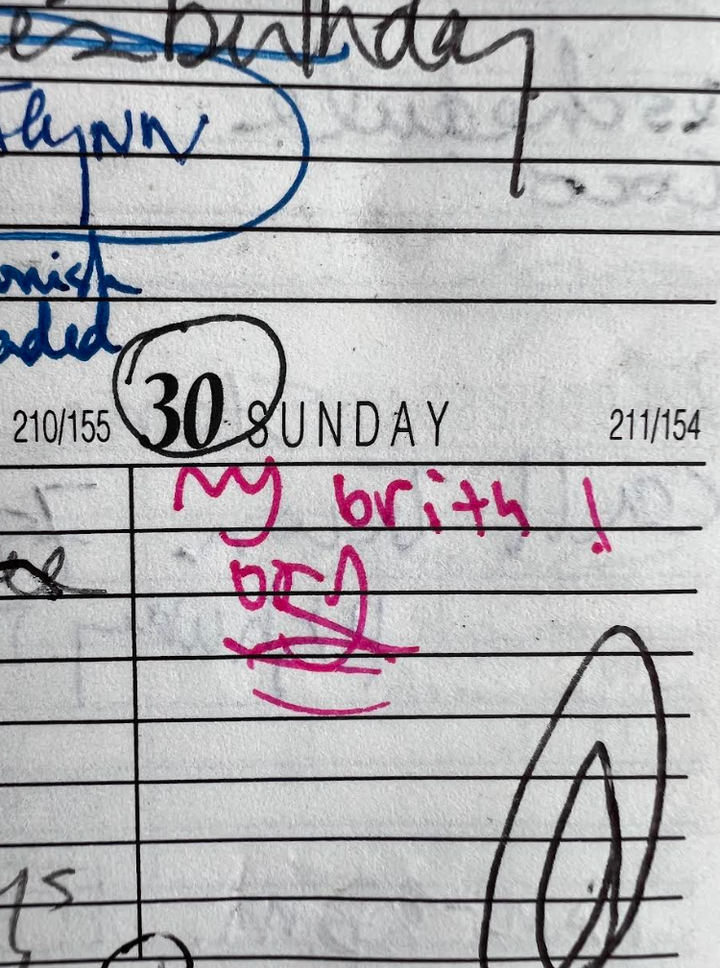
Clocks move ever forward but datebooks provide a tangible conduit to the past. They allow us to flip forward or backward in time, a tactile experience that’s more satisfying than swiping a finger across a screen. This is something I realized at the beginning of 2021 when I tried relying solely on Google Calendar. With the ongoing pandemic I figured I wouldn’t have much to keep track of since 2020 was practically blank. But by mid-February 2021, I had a fresh Moleskine in hand.
I know you’re probably wondering: Why go old-school analog with a tool as essential as a datebook? I still use Google Calendar at times because it can be more efficient. But consider how much time you waste being sucked into the vortex of rabbit holes inherent in apps. Consider the satisfaction intrinsic in dragging a pen through a procrastinated task you’ve finally tackled. Consider how open dates are waiting for on-the-fly brainstorming and the chance to accommodate an impromptu journal entry. And, lastly, let’s not forget posterity: how your handwritten notations will preserve a smidgen of your physicality for the ages.
Paging through a datebook from the past, you’ll find yourself taking stock. How did I use my time? Why did I waste it on that job/project/relationship? Look at what I accomplished! As acclaimed author Annie Dillard famously said: “How we spend our days is, of course, how we spend our lives.”
Several years ago, while clearing my parents’ attic, I discovered a calendar my dad kept in 1965. A freebie from his insurance agent, the datebook’s weeks were cluttered with junk drawer minutiae: reminders to vote, attend barbershop quartet practice, church suppers and coin collector meetings — along with doodles galore. Gazing at the gray ovals penciled inside an eight, I wondered: Is this how he’d occupied himself on a call with a long-winded someone?
Paging past June, I stopped on July 22, where he’d written “7:30 Poverty Program, City Hall,” in his slanted script. In 1965, I was four, too young to know about then-President Lyndon B. Johnson’s War on Poverty initiatives.
Decades later, after Alzheimer’s began affecting my dad’s memory, I learned from a family friend that he had helped launch a local chapter of Head Start in my hometown, Jennings, Louisiana. The initiative, which was originally called Project Head Start, began as an eight-week summer program before becoming a federally funded project for low-income and at-risk children and families. Now, I have evidence of his involvement with the group and his calendar plays a newfound role as a primary source document.
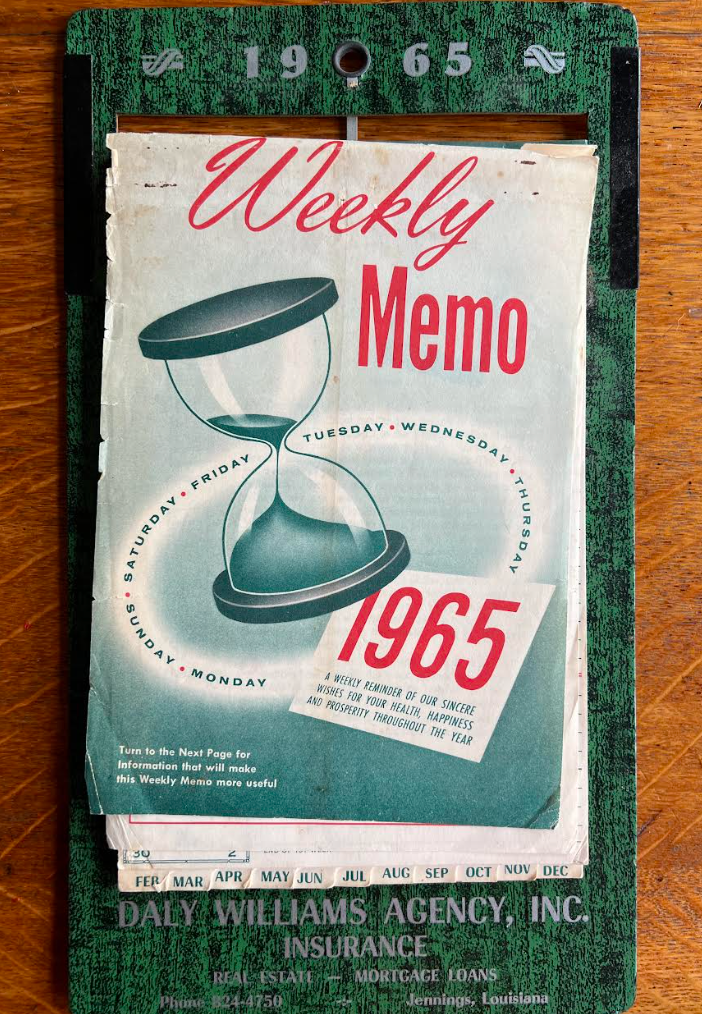
That discovery got me thinking about how our seemingly mundane notations provide continuity between the past and present, and how they hold far more resonance than we might imagine at the time. As the blank dates of a new year accrue the granular minutia of our day-to-day stuff, week after week, month after month, the datebook morphs into a retrospective collage that’s as messy as life itself.
Taken together, the datebooks from my 20s tell the story of a young woman who made too many lists, wanted to save the world and was teetering toward an eating disorder. One day, when my daughters survey my datebooks, they’ll recognize aspects of the 60-something me in the 20-something me. They’ll smile at the solo escapes I planned on Mother’s Day when they were little and be reminded that our shabby Ethan Allen sofa was delivered on Nov. 8, 2004.
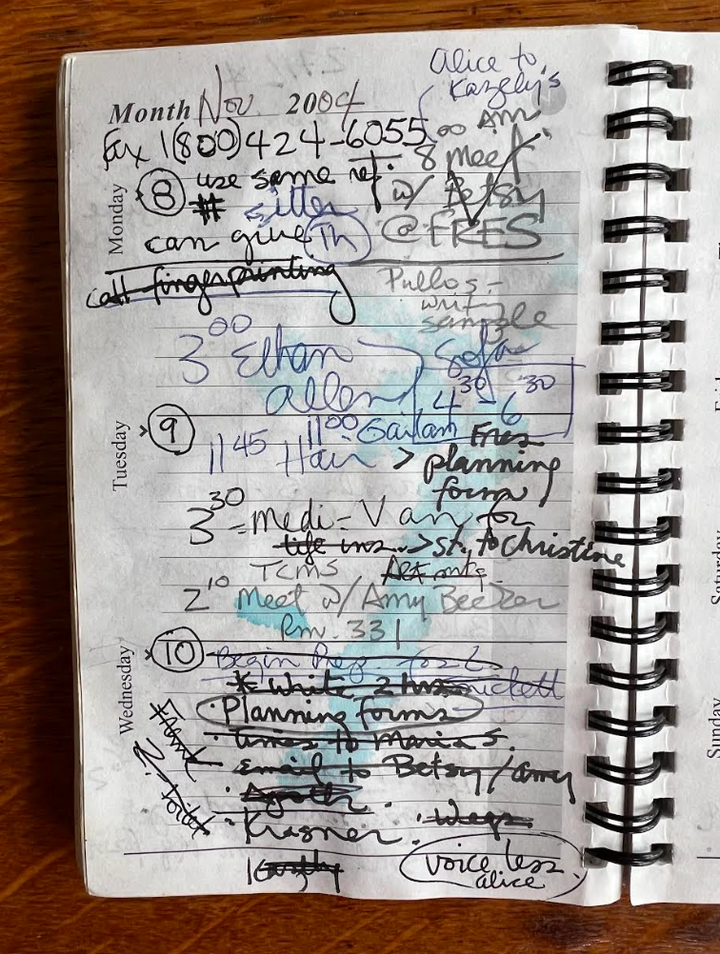
But will they notice the emotional mud seasons I slogged through? How calls, dinner dates and birthday reminders nurtured my deepest friendships? Whatever they (or anyone else) finds, my datebooks will tell the story of not only what I was up to, but who I was and who I was becoming over time. And as my life continues to unfold, my datebooks serve as a constant reminder of Annie Dillard’s sage advice.
This is why I’m inviting you to use a datebook in 2024. Who knows? Years from now, you or someone else might come upon a gem amid the minutiae of your days — a doodle, stray jotting or something else that reveals something about you or how you lived. Something you can’t know now because you haven’t yet written it in your datebook.
You can read Jean Coco’s recent work in Brevity, Ninth Letter online, Hippocampus and The Sun’s Readers Write. She lives in Baton Rouge, Louisiana, where she’s working on a memoir. Follow her on Instagram @jean_coco_writer.
Do you have a compelling personal story you’d like to see published on HuffPost? Find out what we’re looking for here and send us a pitch.
Want to get started on your own planner journey? Check out our picks below.
HuffPost and its publishing partners may receive a commission from some purchases made via links on this page. Every item is independently curated by the HuffPost Shopping team. Prices and availability are subject to change.
A premium Japanese notebook
This straightforward spiral bound notebook has 80 micro-perforated and college-ruled sheets. At the top of each page there’s also ample space for a date and header to make content and notes easier to find.
An undated bullet journal
The Clever Fox planner is designed to increase productivity, manage your time better and help you achieve personal goals. It features a weekly overview in addition to a monthly spread and is filled with ample space to take notes and articulate both short and long term goals.
A weekly tear-away desk planner
A customizable detailed spiral planner
This detailed 12-month planner is broken down by weekly at-a-glance sections to schedule appointments and to-do lists, along with notes and productivity pages at the start of each month. You can choose from four different interior design options as well as academic versions for students or binder-style planners.
A weekly hardcover planner with pre-monthly at-a-glances
This beautifully made planner from Papier feels like you’re holding a hardcover book and has been my planner of choice for nearly four years now. Behind the customizable and monogrammed cover (for which the art options are truly endless), this 13-month diary starts each month with a page for notes, goals, important dates and a task list, while each week is formatted in large, easy-to-see sections for appointment-making and deadlines. A ribbon bookmark also keeps your place, so you can spend less time flipping to the most recent week.
A large monthly at-a-glance planner
Great for long term picture planning, this no-fuss agenda contains 15 months with each month spread out over two bleed-resistant pages. It also contains additional pages for jotting down important contacts and notes.

